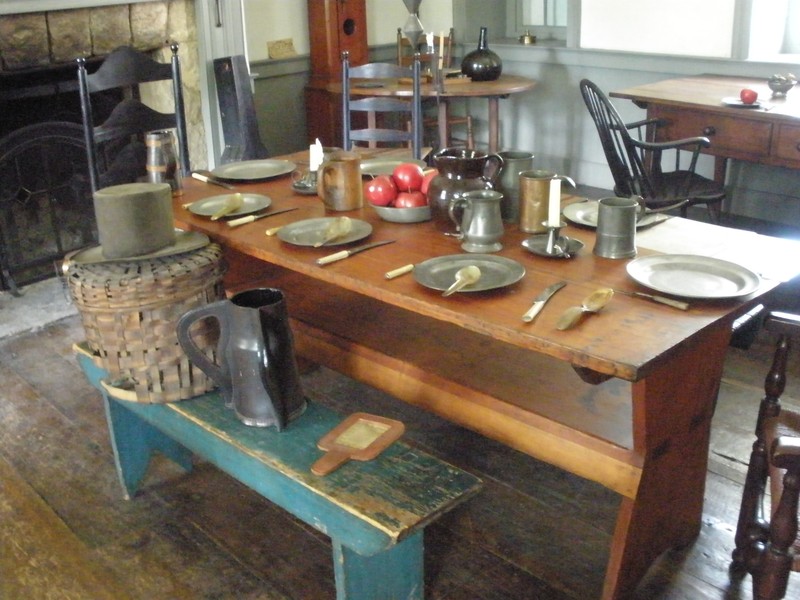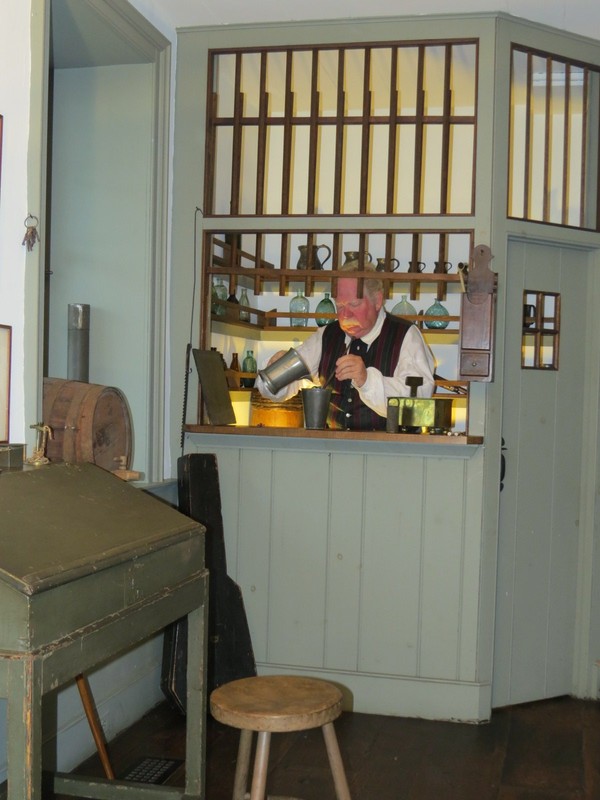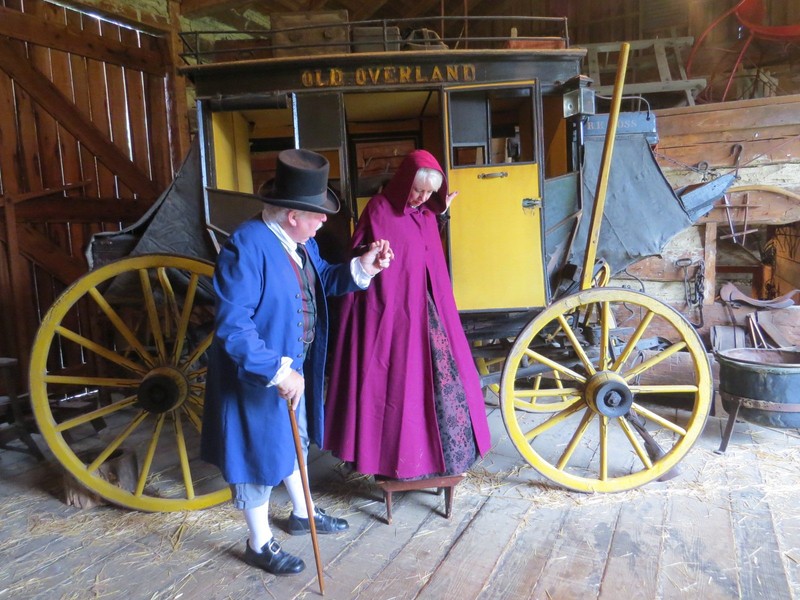Compass Inn Museum
Introduction
Text-to-speech Audio
Images
Compass Inn

The inn's common room.

The bar in the Common Room of the inn. Photo by Rick Schwab

Up to 100 Conestoga Wagons could travel past Compass Inn in one day. Photo by Rick Schwab

Before railroads, stagecoaches were the primary form of travel across Pennsylvania. Photo by Rick Schwab

Backstory and Context
Text-to-speech Audio
In 1797, Laughlintown was founded by Robert Laughlin as a small town which would grow to accommodate travelers along the Pennsylvania State Road and later the Pennsylvania Turnpike. Roughly following the path of Forbes Road, the State Road was the first official road stretch across Pennsylvania. Situated at the foot of the Laurel Hill, the small town of Laughlintown developed into a rest stop, boasting at least six inns and dozens of small businesses.
As the State Road deteriorated, the state made the decision to construct a turnpike, primarily funded by private companies. It was during this time that Robert and Rachel Armor came to Laughlintown and purchased what was then a log inn, which was originally a drover’s inn. Situated directly on the Turnpike, the couple saw the potential for increased business, made the decision to expand the inn and added a stone wing, creating a higher class Inn for stagecoach passengers.
Stagecoaches played a vital role in American history. The first form of mass communication and transportation, it connected the young country through rapid travel times. By the 1830s, a stagecoach could make it from Philadelphia to Pittsburgh in approximately 56 hours. Most stagecoaches adhered to a strict schedule, as many carried the mail. People relied on the stagecoaches and travelers to find out what was happening in other parts of the country. Travel was crowded and uncomfortable, but it was the fastest at the time.
Once at Compass Inn, passengers and drivers were able to find everything they needed. The Inn and family provided lodging and meals for the travelers, and a barn and Blacksmith shop were available to tend to the needs of the coach and horses. Inside the tavern, the family worked hard to supply guests with the necessities. By our standards today, these taverns would be dirty, uncomfortable places with a staff that wouldn’t go out of their way to accommodate visitors. What made Compass Inn a nicer place was the use of a sitting room, or ladies parlor in addition to the common room, and ample sleeping space upstairs with beds for guests. Food would be provided in abundance.
Today, Compass Inn Museum captures the history of stagecoach travel and the daily life of the 19th century. Guided tours take visitors through the inn, which is filled with period furnishings, as well as the fully functioning cookhouse and Blacksmith shop. There is also a reconstructed barn which houses a restored Conestoga Wagon and Stagecoach.
Sources
Holmes, Oliver Wendell. Stagecoach East: Stagecoach Days in the East from Colonial Period to the Civil War. Washington D.C.. Smithsonian Institution Press, 1983.
Vineyard, Ron. Stage Waggons and Coaches. Colonial Williamsburg Digital Library. Accessed February 21, 2018. http://research.history.org/DigitalLibrary/View/index.cfm?doc=ResearchReports%5CRR0380.xml.
Boucher, John N. History of Westmoreland County. New York. The Lewis Publishing Company, 1906.
